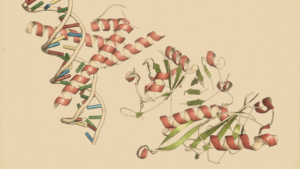Motherhood and Microbes: The Unseen Battle in the Vagina
Discover the hidden battle within the vagina that affects motherhood. Explore how the vaginal microbiome relates to miscarriages. A formal insight for all.
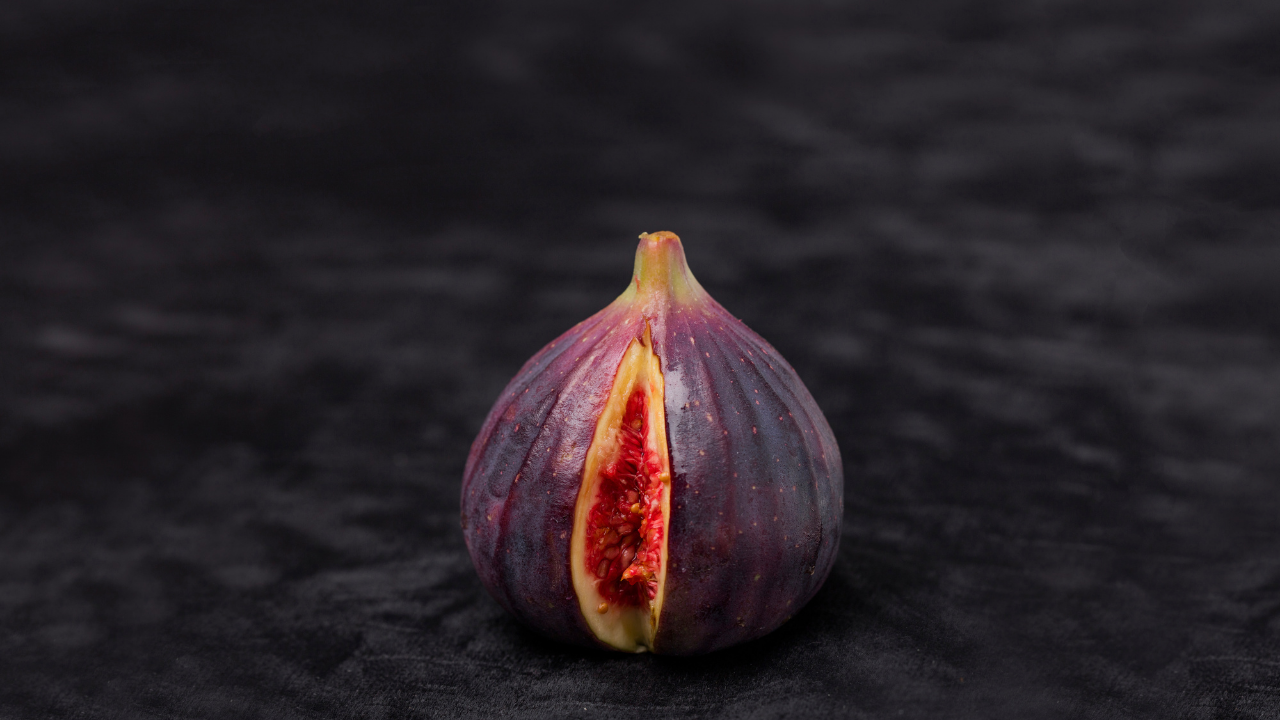
Key Points
- The Vaginal Microbiome's Role in Reproductive Health: A comprehensive overview of the vaginal microbiome, highlighting its importance in maintaining optimal conditions for conception and a healthy pregnancy journey.
- Dysbiosis and Pregnancy Complications: Examination of how imbalances in the vaginal microbial community, termed dysbiosis, can lead to various pregnancy complications, including increased risk of miscarriage.
- Lactobacillus: The Guardian of Pregnancy: Delving into the protective role of the Lactobacillus species in the vaginal ecosystem, and how its dominance or decline can dictate pregnancy outcomes.
- External Factors Influencing the Vaginal Microbiome: Exploration of various lifestyle, environmental, and medical interventions that can impact the microbial balance, from dietary habits to antibiotic treatments.
- Future Directions and Preventative Measures: Discussion on emerging research focusing on the vaginal microbiome's influence on pregnancy and potential interventions or treatments to ensure a balanced microbial environment, thereby enhancing pregnancy outcomes.
Introduction
Pregnancy, a remarkable journey of life and growth, is accompanied by myriad physiological changes that ensure the safety and nourishment of the developing fetus.
However, this transformative period isn't just about the evident hormonal and physical transformations.
Hidden from the naked eye, a microscopic universe within the vaginal canal plays a pivotal role in determining the course of pregnancy.
This universe, comprising diverse microbial communities, is in a constant state of flux, maintaining a delicate balance crucial for reproductive health.
Recent research has shed light on how disturbances in this microbial equilibrium can influence pregnancy outcomes, most notably the tragic event of a miscarriage. "Motherhood and Microbes: The Unseen Battle in the Vagina" delves deep into the intricate relationship between the vaginal microbiome and the challenges and triumphs of motherhood, exploring how these minute organisms can have mammoth impacts on the journey to bring forth life.
In This Article:
Vaginal Microbiome's Impact on Miscarriage
Miscarriages, a widespread concern in obstetrics, impact approximately 25% of pregnancies worldwide.
They can be categorized into early (before 12 weeks) and late (between 12 and 22 weeks) losses. A Trusted Source Larsen, E. C., Christiansen, O. B., Kolte, A. M., Macklon, N. (2013). New insights into mechanisms behind miscarriage. BMC Med. 11, 154. doi: 10.1186/1741-7015-11-154 PubMed Abstract | CrossRef Full Text | Google Scholar A Trusted Source Al-Memar, M., Bobdiwala, S., Fourie, H., Mannino, R., Lee, Y. S., Smith, A., et al. (2020). The association between vaginal bacterial composition and miscarriage: a nested case-control study. BJOG 127 (2), 264–274. doi: 10.1111/1471-0528.15972 PubMed Abstract | CrossRef Full Text | Google Scholar
While common, the causes of most miscarriages remain elusive.
Contributing factors may include uterine abnormalities, genetic and epigenetic issues, immunological factors, and lifestyle choices. A Trusted Source Larsen, E. C., Christiansen, O. B., Kolte, A. M., Macklon, N. (2013). New insights into mechanisms behind miscarriage. BMC Med. 11, 154. doi: 10.1186/1741-7015-11-154 PubMed Abstract | CrossRef Full Text | Google Scholar
During pregnancy, the vaginal microbiota's composition plays a vital role in the health of both the mother and fetus.
Pregnant women exhibit a more stable and less diverse vaginal microbiome compared to non-pregnant women. A Trusted Source Freitas, A. C., Chaban, B., Bocking, A., Rocco, M., Yang, S., Hill, J. E., et al. (2017). The vaginal microbiome of pregnant women is less rich and diverse, with lower prevalence of Mollicutes, compared to non-pregnant women. Sci. Rep. 7 (1), 9212. doi: 10.1038/s41598-017-07790-9 PubMed Abstract | CrossRef Full Text | Google Scholar
Hormonal changes, diet, sexual practices, medical treatments, and infections can influence this microbiome. A Trusted Source Kroon, S. J., Ravel, J., Huston, W. M. (2018). Cervicovaginal microbiota, women's health, and reproductive outcomes. Fertil Steril 110 (3), 327–336. doi: 10.1016/j.fertnstert.2018.06.036 PubMed Abstract | CrossRef Full Text | Google Scholar A Trusted Source Noyes, N., Cho, K-C., Ravel, J., Forney, L. J., Abdo, Z. (2018). Associations between sexual habits, menstrual hygiene practices, demographics and the vaginal microbiome as revealed by Bayesian network analysis. PLoS One 13 (1), e0191625. doi: 10.1371/journal.pone.0191625 PubMed Abstract | CrossRef Full Text | Google Scholar A Trusted Source Dall'Asta, M., Laghi, L., Morselli, S., Re, M. C., Zagonari, S., Patuelli, G., et al. (2021). Pre-pregnancy diet and vaginal environment in caucasian pregnant women: An exploratory study. Front. Mol. Biosci. 8, 702370. doi: 10.3389/fmolb.2021.702370 PubMed Abstract | CrossRef Full Text | Google Scholar
Vaginal dysbiosis, an imbalance in vaginal microbes, is associated with pregnancy complications, including miscarriage and preterm birth. A Trusted Source Brown, R. G., Marchesi, J. R., Lee, Y. S., Smith, A., Lehne, B., Kindinger, L. M., et al. (2018). Vaginal dysbiosis increases risk of preterm fetal membrane rupture, neonatal sepsis and is exacerbated by erythromycin. BMC Med. 16 (1), 9. doi: 10.1186/s12916-017-0999-x PubMed Abstract | CrossRef Full Text | Google Scholar A Trusted Source Juliana, N. C. A., Suiters, M. J. M., Al-Nasiry, S., Morré, S. A., Peters, R. P. H., Ambrosino, E. (2020). The association between vaginal microbiota dysbiosis, bacterial vaginosis, and aerobic vaginitis, and adverse pregnancy outcomes of women living in sub-saharan africa: A systematic review. Front. Public Health 8, 567885. doi: 10.3389/fpubh.2020.567885 PubMed Abstract | CrossRef Full Text | Google Scholar
In a healthy pregnancy, Lactobacillus species dominate the vaginal microbiota. A Trusted Source Gupta, P., Singh, M. P., Goyal, K. (2020). Diversity of vaginal microbiome in pregnancy: Deciphering the obscurity. Front. Public Health 8, 326. doi: 10.3389/fpubh.2020.00326 PubMed Abstract | CrossRef Full Text | Google Scholar A Trusted Source Marangoni, A., Laghi, L., Zagonari, S., Patuelli, G., Zhu, C., Foschi, C., et al. (2021). New insights into vaginal environment during pregnancy. Front. Mol. Biosci. 8, 656844. doi: 10.3389/fmolb.2021.656844 PubMed Abstract | CrossRef Full Text | Google Scholar
Reduced Lactobacillus species may be linked to preterm delivery.
However, more research is needed to fully grasp the connection between miscarriage and uterine/vaginal microbiota. A Trusted Source Zhang, F., Zhang, T., Ma, Y., Huang, Z., He, Y., Pan, H., et al. (2019). Alteration of vaginal microbiota in patients with unexplained recurrent miscarriage. Exp. Ther. Med. 17 (5), 3307–3316. doi: 10.3892/etm.2019.7337 PubMed Abstract | CrossRef Full Text | Google Scholar A Trusted Source Xu, L., Huang, L., Lian, C., Xue, H., Lu, Y., Chen, X., et al. (2020). Vaginal microbiota diversity of patients with embryonic miscarriage by using 16S rDNA high-throughput sequencing. Int. J. Genomics 2020, 1764959. doi: 10.1155/2020/1764959 PubMed Abstract | CrossRef Full Text | Google Scholar
Recent findings suggest that an imbalanced vaginal microbiota may elevate inflammation and infection risk, potentially leading to miscarriage.
Pregnant women with a well-balanced vaginal microbiota may have a lower miscarriage risk. A Trusted Source Gunther, V., Allahqoli, L., Watrowski, R., Maass, N., Ackermann, J., von Otte, S., et al. (2022). Vaginal microbiome in reproductive medicine. Diagnostics (Basel) 12 (8), 1948. doi: 10.3390/diagnostics12081948 PubMed Abstract | CrossRef Full Text | Google Scholar A Trusted Source Grewal, K., Lee, Y. S., Smith, A., Brosens, J. J., Bourne, T., Al-Memar, M., et al. (2022). Chromosomally normal miscarriage is associated with vaginal dysbiosis and local inflammation. BMC Med. 20 (1), 38. doi: 10.1186/s12916-021-02227-7 PubMed Abstract | CrossRef Full Text | Google Scholar
Although there has been significant progress in understanding the human microbiota and pregnancy, research on the link between the vaginal microbiome and miscarriage remains limited.
Exploring this association could unveil novel preventive measures and improve pregnancy outcomes.
HIGHLIGHT
Miscarriages impact 25% of pregnancies, categorized into early and late losses. Causes remain unclear, but factors like uterine abnormalities and vaginal microbiota may contribute. Further research is needed for prevention.
Miscarriage Stats and Vaginal Microbiome
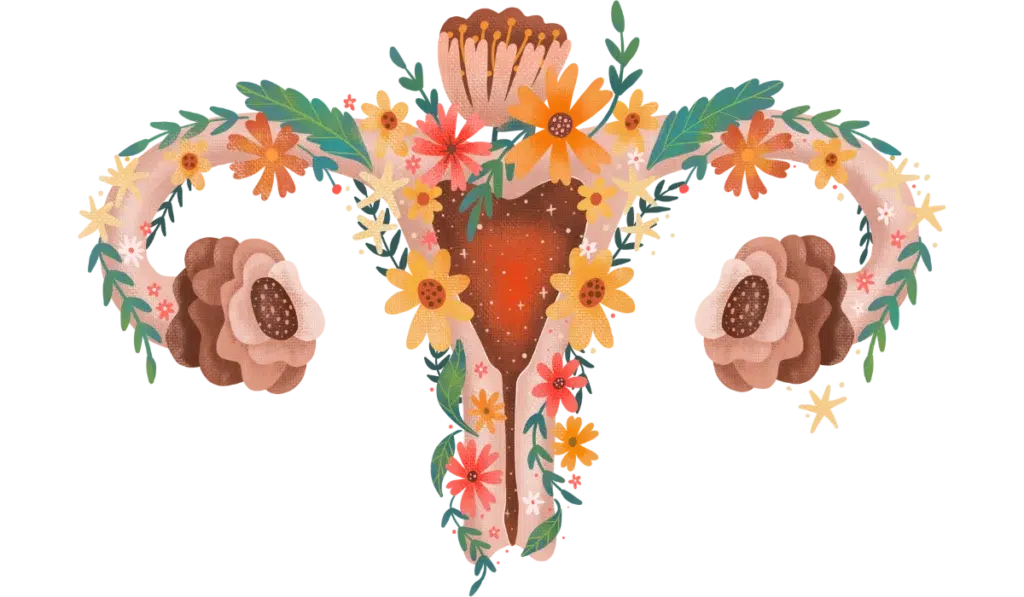
Around 23 million miscarriages occur worldwide annually, averaging 44 pregnancy losses per minute. A Trusted Source Quenby, S., Gallos, I. D., Dhillon-Smith, R. K., Podesek, M., Stephenson, M. D., Fisher, J., et al. (2021). Miscarriage matters: the epidemiological, physical, psychological, and economic costs of early pregnancy loss. Lancet 397 (10285), 1658–1667. doi: 10.1016/S0140-6736(21)00682-6 PubMed Abstract | CrossRef Full Text | Google Scholar
Research reveals that 10.8% of women experience one miscarriage, 1.9% have two, and 0.7% have three or more.
National data from Sweden, Finland, and Denmark show miscarriage rates ranging from 12.9% to 13.5%. A Trusted Source Hemminki, E., Forssas, E. (1999). Epidemiology of miscarriage and its relation to other reproductive events in Finland. Am. J. Obstet Gynecol 181 (2), 396–401. doi: 10.1016/S0002-9378(99)70568-5 PubMed Abstract | CrossRef Full Text | Google Scholar A Trusted Source Nybo Andersen, A. M., Wohlfahrt, J., Christens, P., Olsen, J., Melbye, M. (2000). Maternal age and fetal loss: population based register linkage study. BMJ 320 (7251), 1708–1712. doi: 10.1136/bmj.320.7251.1708 PubMed Abstract | CrossRef Full Text | Google Scholar A Trusted Source Adolfsson, A., Larsson, P. G. (2006). Cumulative incidence of previous spontaneous abortion in Sweden in 1983-2003: a register study. Acta Obstet Gynecol Scand. 85 (6), 741–747. doi: 10.1080/00016340600627022 PubMed Abstract | CrossRef Full Text | Google Scholar
Norwegian research at an Oslo hospital from 2000 to 2002 estimated a 12% miscarriage rate. A Trusted Source Eskild, A., Vatten, L. J., Nesheim, B-I., Vangen, S. (2009). The estimated risk of miscarriage should be corrected for induced abortion rates. Acta Obstet Gynecol Scand. 88 (5), 569–574. doi: 10.1080/00016340902814567 PubMed Abstract | CrossRef Full Text | Google Scholar
Miscarriages are categorized into early (before 12 weeks) and late (12-22 weeks) losses.
Stillbirth is defined as fetal death at or after 20 weeks of gestation or a birthweight of ≥500g, while miscarriages involve <500g or fetal death before 20 weeks of gestation. A Trusted Source Magnus, M. C., Wilcox, A. J., Morken, N-H., Weinberg, C. R., Håberg, S. E. (2019). Role of maternal age and pregnancy history in the risk of miscarriage: a prospective register-based study. BMJ 364, l869. doi: 10.1136/bmj.l869. PubMed Abstract | CrossRef Full Text | Google Scholar
Symptoms vary but include vaginal bleeding, cramping, passage of clots or tissue, severe abdominal pain, and reduced pregnancy signs.
Miscarriages impact physical and psychological health, potentially leading to post-traumatic stress disorder.
In the UK, 140,000 miscarriages yearly cost £471 million. A Trusted Source Devall, A. J., Coomarasamy, A. (2020). Sporadic pregnancy loss and recurrent miscarriage. Best Pract. Res. Clin. Obstet Gynaecol 69, 30–39. doi: 10.1016/j.bpobgyn.2020.09.002 PubMed Abstract | CrossRef Full Text | Google Scholar
Despite the prevalence, miscarriage-cause assessments are infrequent. A Trusted Source Lathi, R. B., Gray Hazard, F. K., Heerema-McKenney, A., Taylor, J., Chueh, J. T. (2011). First trimester miscarriage evaluation. Semin. Reprod. Med. 29 (6), 463–469. doi: 10.1055/s-0031-1293200 PubMed Abstract | CrossRef Full Text | Google Scholar
Research on vaginal microbiome links to miscarriage types is emerging:
- Recurrent miscarriage (RM): Affecting 1% of pregnancies, RM entails three or more consecutive miscarriages. A Trusted Source Garrido-Gimenez, C., Alijotas-Reig, J. (2015). Recurrent miscarriage: causes, evaluation and management. Postgrad Med. J. 91 (1073), 151–162. doi: 10.1136/postgradmedj-2014-132672 PubMed Abstract | CrossRef Full Text | Google Scholar . Some studies suggest vaginal microbiota imbalances may contribute. A Trusted Source Zhao, F., Hu, X., Ying, C. (2023). Advances in research on the relationship between vaginal microbiota and adverse pregnancy outcomes and gynecological diseases. Microorganisms 11 (4), 991. doi: 10.3390/microorganisms11040991 PubMed Abstract | CrossRef Full Text | Google Scholar
- Threatened miscarriage: Characterized by bleeding and mild cramps with a closed cervix. Half resolve, but others result in pregnancy loss. A Trusted Source Wahabi, H. A., Fayed, A. A., Esmaeil, S. A., Bahkali, K. H. (2018). Progestogen for treating threatened miscarriage. Cochrane Database Syst. Rev. 8 (8), CD005943. doi: 10.1002/14651858.CD005943.pub5 PubMed Abstract | CrossRef Full Text | Google Scholar. Dysbiosis in the vaginal microbiome may increase the risk. A Trusted Source Chen, X., Guo, Y., Zhang, Y., Si, C., Zhang, H., Huang, X., et al. (2022). Microbiome Characteristics in Early Threatened Miscarriage Study (MCETMS): a study protocol for a prospective cohort investigation in China. BMJ Open 12 (9), e057328. doi: 10.1136/bmjopen-2021-057328 PubMed Abstract | CrossRef Full Text | Google Scholar
HIGHLIGHT
Around 23 million annual miscarriages worldwide, with varying types affecting physical and psychological health. Emerging research links vaginal microbiome imbalances to recurrent and threatened miscarriages.
Miscarriages: Causes and Vulnerabilities
While the precise causes of most miscarriages remain elusive, several contributing factors are well-established.
These include maternal age, genetics, hormones, immunological factors, and environmental influences. A Trusted Source Agenor, A., Bhattacharya, S. (2015). Infertility and miscarriage: common pathways in manifestation and management. Womens Health (Lond) 11 (4), 527–541. doi: 10.2217/WHE.15.19 PubMed Abstract | CrossRef Full Text | Google Scholar A Trusted Source Garrido-Gimenez, C., Alijotas-Reig, J. (2015). Recurrent miscarriage: causes, evaluation and management. Postgrad Med. J. 91 (1073), 151–162. doi: 10.1136/postgradmedj-2014-132672 PubMed Abstract | CrossRef Full Text | Google Scholar
Genetic factors, such as parental chromosomal anomalies or embryo genotypes, account for over 50% of recurrent miscarriages.
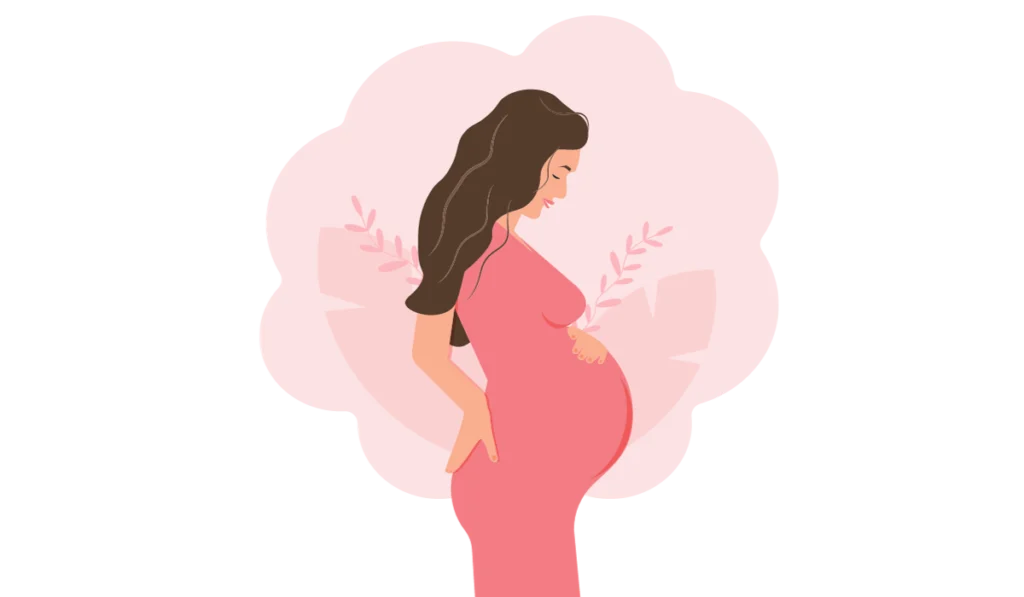
Maternal age emerges as a prominent risk factor, with a gradual increase in miscarriage likelihood as women age. A Trusted Source de la Rochebrochard, E., Thonneau, P. (2002). Paternal age and maternal age are risk factors for miscarriage; results of a multicentre European study. Hum. Reprod. 17 (6), 1649–1656. doi: 10.1093/humrep/17.6.1649 PubMed Abstract | CrossRef Full Text | Google Scholar
Women over 30 years old face a significantly higher risk.
For instance, pregnancies at age 42 or older have over 50% risk of ectopic pregnancy, stillbirth, or spontaneous abortion. A Trusted Source Nybo Andersen, A. M., Wohlfahrt, J., Christens, P., Olsen, J., Melbye, M. (2000). Maternal age and fetal loss: population based register linkage study. BMJ 320 (7251), 1708–1712. doi: 10.1136/bmj.320.7251.1708 PubMed Abstract | CrossRef Full Text | Google Scholar
Even after accounting for reproductive history, the risk remains elevated.
Norwegian research found the lowest miscarriage risk at age 27 (9.5%), while women 45 and older had the highest risk (53.6%). A Trusted Source Magnus, M. C., Wilcox, A. J., Morken, N-H., Weinberg, C. R., Håberg, S. E. (2019). Role of maternal age and pregnancy history in risk of miscarriage: prospective register based study. BMJ 364, l869. doi: 10.1136/bmj.l869 PubMed Abstract | CrossRef Full Text | Google Scholar
Pregnancy history also plays a crucial role.
Women with prior stillbirths, miscarriages, or complications like gestational diabetes and c-sections face increased miscarriage risks.
Miscarriage risks vary across pregnancy stages.
The first trimester is most susceptible due to fetal mutations. A Trusted Source Hyde, K. J., Schust, D. J. (2015). Genetic considerations in recurrent pregnancy loss. Cold Spring Harb. Perspect. Med. 5 (3), a023119. doi: 10.1101/cshperspect.a023119 PubMed Abstract | CrossRef Full Text | Google Scholar A Trusted Source Hardy, K., Hardy, P. J. (2015). 1(st) trimester miscarriage: four decades of study. Transl. Pediatr. 4 (2), 189–200. doi: 10.3978/j.issn.2224-4336.2015.03.05 PubMed Abstract | CrossRef Full Text | Google Scholar
Second-trimester risks generally decrease but can persist due to maternal or placental issues. A Trusted Source Odendaal, H., Wright, C., Brink, L., Schubert, P., Geldenhuys, E., Groenewald, C. (2019). Association of late second trimester miscarriages with placental histology and autopsy findings. Eur. J. Obstet Gynecol Reprod. Biol. 243, 32–35. doi: 10.1016/j.ejogrb.2019.10.024 PubMed Abstract | CrossRef Full Text | Google Scholar A Trusted Source Cheung, K. W., Seto, M. T. Y., Wang, W., Mok, Y. K., Cheung, V. Y. T. (2023). Clinical presentation, investigation, underlying causes, and subsequent pregnancy outcomes among different phenotypes of second trimester miscarriage. J. Obstet Gynaecol Res. 49 (2), 539–547. doi: 10.1111/jog.15514 PubMed Abstract | CrossRef Full Text | Google Scholar
Third-trimester miscarriages are rare and result from factors like premature labor, infections, or placental problems. A Trusted Source Giakoumelou, S., Wheelhouse, N., Cuschieri, K., Entrican, G., Howie, S. E.M., Horne, A. W. (2016). The role of infection in miscarriage. Hum. Reprod. Update 22 (1), 116–133. doi: 10.1093/humupd/dmv041 PubMed Abstract | CrossRef Full Text | Google Scholar
Ethnicity can influence miscarriage susceptibility, with recent findings showing higher rates among Black individuals compared to White. A Trusted Source Mukherjee, S., Velez Edwards, D. R., Baird, D. D., Savitz, D. A., Hartmann, K. E. (2013). Risk of miscarriage among black women and white women in a U.S. Prospective Cohort Study. Am. J. Epidemiol. 177 (11), 1271–1278. doi: 10.1093/aje/kws393 PubMed Abstract | CrossRef Full Text | Google Scholar A Trusted Source Quenby, S., Gallos, I. D., Dhillon-Smith, R. K., Podesek, M., Stephenson, M. D., Fisher, J., et al. (2021). Miscarriage matters: the epidemiological, physical, psychological, and economic costs of early pregnancy loss. Lancet 397 (10285), 1658–1667. doi: 10.1016/S0140-6736(21)00682-6 PubMed Abstract | CrossRef Full Text | Google Scholar
Genetic traits, immune responses, hormones, and disease susceptibilities vary among ethnic groups, while cultural and socioeconomic factors indirectly impact miscarriage risks through healthcare access and lifestyle choices. A Trusted Source Yazdkhasti, M., Pourreza, A., Pirak, A., Abdi, F. (2015). Unintended pregnancy and its adverse social and economic consequences on health system: A narrative review article. Iran J. Public Health 44 (1), 12–21. PubMed Abstract | Google Scholar A Trusted Source Zheng, D., Li, C., Wu, T., Tang, K. (2017). Factors associated with spontaneous abortion: a cross-sectional study of Chinese populations. Reprod. Health 14 (1), 33. doi: 10.1186/s12978-017-0297-2 PubMed Abstract | CrossRef Full Text | Google Scholar
HIGHLIGHT
Miscarriage factors: maternal age, genetics, pregnancy history, trimester risks. Ethnicity may influence susceptibility due to genetics, health, and lifestyle factors.
Vaginal Microbiome's Role in Miscarriage Risk
The vaginal microbiota is distinctive in its relatively low diversity and dominance of Lactobacillus species, particularly during pregnancy. A Trusted Source Ravel, J., Gajer, P., Abdo, Z., Schneider, G. M., Koenig, S. S. K., McCulle, S. L., et al. (2011). Vaginal microbiome of reproductive-age women. Proc. Natl. Acad. Sci. U.S. A. 108 Suppl 1 (Suppl 1), 4680–4687. doi: 10.1073/pnas.1002611107 PubMed Abstract | CrossRef Full Text | Google Scholar A Trusted Source Kervinen, K., Kalliala, I., Glazer-Livson, S., Virtanen, S., Niemenen, P., Salonen, A. (2019). Vaginal microbiota in pregnancy: Role in induction of labor and seeding the neonate''s microbiota? J. Biosci. 44 (5), 116. doi: 10.1007/s12038-019-9925-z PubMed Abstract | CrossRef Full Text | Google Scholar
This unique environment serves as a complex interface where the human immune system, vaginal epithelial cells, and microbes interact. A Trusted Source Gajer, P., Brotman, R. M., Bai, G., Sakamoto, J., Schütte, U. M.E., Zhong, X., et al. (2012). Temporal dynamics of the human vaginal microbiota. Sci. Transl. Med. 4 (132), 132ra52. PubMed Abstract | Google Scholar
Researchers have identified five main community state types (CST) in reproductive-age women, categorized by their dominant bacteria: CST-I (L. crispatus), CST-II (L. gasseri), CST-III (L. iners), CST-IV (pathogenic, anaerobic bacteria), and CST-V (stable, L. jensenii). A Trusted Source Yamamoto, T., Zhou, X., Williams, C. J., Hochwalt, A., Forney, L. J. (2009). Bacterial populations in the vaginas of healthy adolescent women. J. Pediatr. Adolesc. Gynecol 22 (1), 11–18. doi: 10.1016/j.jpag.2008.01.073 PubMed Abstract | CrossRef Full Text | Google Scholar
Lactobacillus species are essential for maintaining vaginal health by protecting against pathogens and maintaining a normal pH of 3.6 to 4.5. A Trusted Source O'Hanlon, D. E., Moench, T. R., Cone, R. A. (2013). Vaginal pH and microbicidal lactic acid when lactobacilli dominate the microbiota. PLoS One 8 (11), e80074. doi: 10.1371/journal.pone.0080074 PubMed Abstract | CrossRef Full Text | Google Scholar
The vaginal microbiota composition plays a pivotal role in conception and pregnancy outcomes. A Trusted Source MacIntyre, D. A., Chandiramani, M., Lee, Y. S., Kindinger, L., Smith, A., Angelopoulos, N., et al. (2015). The vaginal microbiome during pregnancy and the postpartum period in a European population. Sci. Rep. 5, 8988. doi: 10.1038/srep08988 PubMed Abstract | CrossRef Full Text | Google Scholar A Trusted Source Amabebe, E., Anumba, D. O. C. (2018). The vaginal microenvironment: The physiologic role of lactobacilli. Front. Med. (Lausanne) 5, 181. doi: 10.3389/fmed.2018.00181 PubMed Abstract | CrossRef Full Text | Google Scholar
High microbial diversity increases the risk of pathogen colonization, leading to immune activation, inflammation, uterine contractions, and fetal membrane remodeling, ultimately elevating the risk of miscarriage.
Conversely, the dominance of Lactobacillus species inhibits pathogen colonization, reducing the risk of complications like a miscarriage.
Various factors influence vaginal microbiome composition, including environmental conditions (antibiotics, contraception, pre- and probiotics), lifestyle (hygiene, sexual habits), individual characteristics (age, genetics, immune status, hormones, socioeconomic status, ethnicity), and general health. A Trusted Source Brooks, J. P., Edwards, D. J., Blithe, D. L., Fettweis, J. M., Serrano, M. G., Sheth, N. U., et al. (2017). Effects of combined oral contraceptives, depot medroxyprogesterone acetate and the levonorgestrel-releasing intrauterine system on the vaginal microbiome. Contraception 95 (4), 405–413. doi: 10.1016/j.contraception.2016.11.006 PubMed Abstract | CrossRef Full Text | Google Scholar
Recent research links vaginal microbiota diversity and richness to adverse pregnancy outcomes, including preterm birth A Trusted Source Kumar, M., Murugesan, S., Singh, P., Saadaoui, M., Elhag, D. A., Terranegra, A., et al. (2021). Vaginal microbiota and cytokine levels predict preterm delivery in asian women. Front. Cell Infect. Microbiol. 11, 639665. doi: 10.3389/fcimb.2021.639665 PubMed Abstract | CrossRef Full Text | Google Scholar and miscarriage. A Trusted Source Stout, M. J., Zhou, Y., Wylie, K. M., Tarr, P. I., Macones, G. A., Tuuli, M. G. (2017). Early pregnancy vaginal microbiome trends and preterm birth. Am. J. Obstet Gynecol 217 (3), 356.e1–356.e18. doi: 10.1016/j.ajog.2017.05.030 PubMed Abstract | CrossRef Full Text | Google Scholar
Several studies hint at a possible connection between preterm delivery, decreased Lactobacillus spp., and increased bacterial diversity in the vagina. A Trusted Source Al-Memar, M., Bobdiwala, S., Fourie, H., Mannino, R., Lee, Y. S., Smith, A., et al. (2020). The association between vaginal bacterial composition and miscarriage: a nested case-control study. BJOG 127 (2), 264–274. doi: 10.1111/1471-0528.15972 PubMed Abstract | CrossRef Full Text | Google Scholar
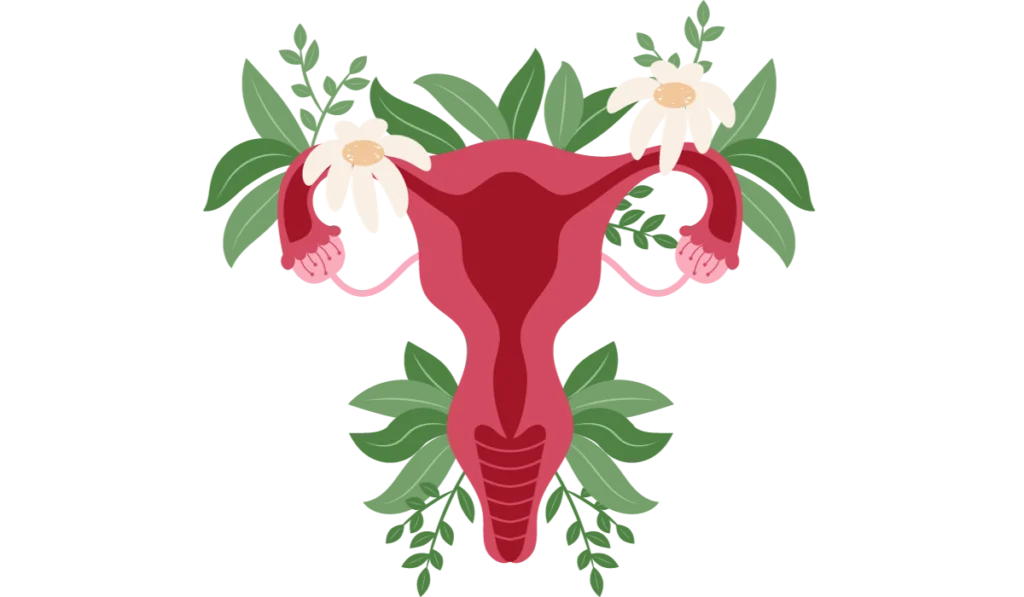
However, the direct impact of vaginal microbiome composition on miscarriage remains largely unknown. A Trusted Source Kiecka, A., Macura, B., Szczepanik, M. (2021). Can lactobacillus spp. Be a factor reducing the risk of miscarriage? Pol. J. Microbiol. 70 (4), 431–446. doi: 10.33073/pjm-2021-043 PubMed Abstract | CrossRef Full Text | Google Scholar
Miscarriage risk has been linked to vaginal microbiome changes through various mechanisms.
First-trimester miscarriages correlate with decreased Lactobacillus spp. and increased bacterial diversity.
Infections like Group B Streptococcus, which causes exfoliation and bacterial ascension, are associated with higher miscarriage rates. A Trusted Source Vornhagen, J., Armistead, B., Santana-Ufret, V., Gendrin, C., Merillat, S., Coleman, M., et al. (2018). Group B streptococcus exploits vaginal epithelial exfoliation for ascending infection. J. Clin. Invest. 128 (5), 1985–1999. doi: 10.1172/JCI97043 PubMed Abstract | CrossRef Full Text | Google Scholar
Abundance of Atopobium, Prevotella, and Streptococcus species is higher in recurrent miscarriage (RM) cases, along with elevated Ureaplasma levels. A Trusted Source Zhang, F., Zhang, T., Ma, Y., Huang, Z., He, Y., Pan, H., et al. (2019). Alteration of vaginal microbiota in patients with unexplained recurrent miscarriage. Exp. Ther. Med. 17 (5), 3307–3316. doi: 10.3892/etm.2019.7337 PubMed Abstract | CrossRef Full Text | Google Scholar
Conversely, Lactobacillus iners predominates in women with recurrent miscarriages. A Trusted Source Shahid, M., Quinlivan, J. A., Peek, M., Castaño-Rodríguez, N., Mendz, G. L. (2022). Is there an association between the vaginal microbiome and first trimester miscarriage? A prospective observational study. J. Obstet Gynaecol Res. 48 (1), 119–128. doi: 10.1111/jog.15086 PubMed Abstract | CrossRef Full Text | Google Scholar
Notably, Lactobacillus crispatus dominance reduces the risk of late miscarriage.
Low Lactobacillus levels are concerning, as they correlate with decreased implantation and increased pregnancy loss during in vitro fertilization. A Trusted Source Singer, M., Borg, M., Ouburg, S., Morré, S. A. (2019). The relation of the vaginal microbiota to early pregnancy development during in vitro fertilization treatment-A meta-analysis. J. Gynecol Obstet Hum. Reprod. 48 (4), 223–229. doi: 10.1016/j.jogoh.2019.01.007 PubMed Abstract | CrossRef Full Text | Google Scholar
Higher concentrations of Leptotrichia/Sneathia or Megasphaera phylotype 1-like species have been associated with reduced early miscarriage risk. A Trusted Source Nelson, D. B., Hanlon, A. L., Wu, G., Liu, C., Fredricks, D. N. (2015). First trimester levels of BV-associated bacteria and risk of miscarriage among women early in pregnancy. Matern Child Health J. 19 (12), 2682–2687. doi: 10.1007/s10995-015-1790-2 PubMed Abstract | CrossRef Full Text | Google Scholar
Dysbiosis in the vaginal microbiota during the first trimester may elevate the risk of second-trimester pregnancy loss, particularly in cases with pronounced alterations.
Numerous studies have explored the link between recurrent miscarriage (RM), Lactobacillus spp., and pathogenic bacterial growth in non-pregnant women with three or more consecutive miscarriages. A Trusted Source Llahi-Camp, J. M., Rai, R., Ison, C., Regan, L., Taylor-Robinson, D. (1996). Association of bacterial vaginosis with a history of second trimester miscarriage. Hum. Reprod. 11 (7), 1575–1578. doi: 10.1093/oxfordjournals.humrep.a019440 PubMed Abstract | CrossRef Full Text | Google Scholar A Trusted Source Kuon, R. J., Togawa, R., Vomstein, K., Weber, M., Goeggl, T., Strowitzki, T., et al. (2017). Higher prevalence of colonization with Gardnerella vaginalis and gram-negative anaerobes in patients with recurrent miscarriage and elevated peripheral natural killer cells. J. Reprod. Immunol. 120, 15–19. doi: 10.1016/j.jri.2017.03.001 PubMed Abstract | CrossRef Full Text | Google Scholar
Bacterial vaginosis (BV) was more common in cases of single second-trimester miscarriage than in RM cases.
Recent research utilizing 16S rRNA gene sequencing found that RM cases exhibited higher genus richness in the vaginal microbiota compared to healthy women, with bacteria such as Atopobium, Prevotella, and Streptococcus identified.
RM cases also showed reduced Lactobacillus spp. levels. A Trusted Source Fan, T., Zhong, X-M., Wei, X-C., Miao, Z-L., Luo, S-Y., Cheng, H., et al. (2020). The alteration and potential relationship of vaginal microbiota and chemokines for unexplained recurrent spontaneous abortion. Med. (Baltimore) 99 (51), e23558. doi: 10.1097/MD.0000000000023558 CrossRef Full Text | Google Scholar
Additionally, almost 20% of RM patients had vaginal colonization by G. vaginalis, and 15% by Enterobacteriaceae. BV may contribute to chronic endometritis, linked to RM. A Trusted Source Bardos, J., Fiorentino, D., Longman, R. E., Paidas, M. (2019). Immunological role of the maternal uterine microbiome in pregnancy: Pregnancies pathologies and alterated microbiota. Front. Immunol. 10, 2823. doi: 10.3389/fimmu.2019.02823 PubMed Abstract | CrossRef Full Text | Google Scholar A Trusted Source Kiecka, A., Macura, B., Szczepanik, M. (2021). Can lactobacillus spp. Be a factor reducing the risk of miscarriage? Pol. J. Microbiol. 70 (4), 431–446. doi: 10.33073/pjm-2021-043 PubMed Abstract | CrossRef Full Text | Google Scholar
Toxoplasma gondii, an intracellular protozoan, has been associated with miscarriage, especially in early pregnancy. A Trusted Source Kalantari, N., Gorgani-Firouzjaee, T., Moulana, Z., Chehrazi, M., Ghaffari, S. (2021). Toxoplasma gondii infection and spontaneous abortion: A systematic review and meta-analysis. Microb. Pathog. 158, 105070. doi: 10.1016/j.micpath.2021.105070 PubMed Abstract | CrossRef Full Text | Google Scholar
The exact mechanisms remain unclear, but it's believed to involve damage to the fetus and placenta.
Chlamydia trachomatis infection can induce faulty decidualization and chemokine release, potentially leading to miscarriage. A Trusted Source Giakoumelou, S., Wheelhouse, N., Brown, J., Wade, J., Simitsidellis, I., Gibson, D., et al. (2017). Chlamydia trachomatis infection of human endometrial stromal cells induces defective decidualisation and chemokine release. Sci. Rep. 7 (1), 2001. PubMed Abstract | Google Scholar
However, associations between Chlamydia trachomatis and miscarriage have been inconsistent in some studies. A Trusted Source Rantsi, T., Joki-Korpela, P., Wikström, E., Öhman, H., Bloigu, A., Lehtinen, M., et al. (2016). Population-based study of prediagnostic antibodies to Chlamydia trachomatis in relation to adverse pregnancy outcome. Sexually transmitted Dis. 43 (6), 382–387. doi: 10.1097/OLQ.0000000000000432 CrossRef Full Text | Google Scholar
Human papillomavirus (HPV) is a prevalent reproductive system viral infection A Trusted Source De Sanjosé, S., Diaz, M., Castellsagué, X., Clifford, G., Bruni, L., Muñoz, N., et al. (2007). Worldwide prevalence and genotype distribution of cervical human papillomavirus DNA in women with normal cytology: a meta-analysis. Lancet Infect. Dis. 7 (7), 453–459. doi: 10.1016/S1473-3099(07)70158-5 PubMed Abstract | CrossRef Full Text | Google Scholar , with higher prevalence in pregnant women compared to non-pregnant peers. A Trusted Source Castellsagué, X., Drudis, T., Cañadas, M. P., Goncé, A., Ros, R., Pérez, J. M., et al. (2009). Human Papillomavirus (HPV) infection in pregnant women and mother-to-child transmission of genital HPV genotypes: a prospective study in Spain. BMC Infect. Dis. 9 (1), 74. doi: 10.1186/1471-2334-9-74 PubMed Abstract | CrossRef Full Text | Google Scholar
Its prevalence increases with pregnancy progression.
HPV has been detected in spontaneous and elective abortions, suggesting a potential role in miscarriages. A Trusted Source Hermonat, P., Han, L., Wendel, P. J., Quirk, J. G., Stern, S., Lowery, C. L., et al. (1997). Human papillomavirus is more prevalent in first trimester spontaneously aborted products of conception compared to elective specimens. Virus Genes 14, 13–17. doi: 10.1023/A:1007975005433 PubMed Abstract | CrossRef Full Text | Google Scholar
HPV inhibits placental trophoblast growth, reduces cell viability, and induces cellular death, potentially impacting miscarriage rates. A Trusted Source Chen, S. S., Block, B. S., Chan, P. J. (2015). Pentoxifylline attenuates HPV-16 associated necrosis in placental trophoblasts. Arch. gynecology obstetrics 291, 647–652. doi: 10.1007/s00404-014-3471-6 CrossRef Full Text | Google Scholar
Polyomavirus BK virus infection has shown inconclusive results regarding adverse pregnancy outcomes. A Trusted Source Cajaiba, M. M., Parks, W. T., Fuhrer, K., Randhawa, P. S. (2011). Evaluation of human polyomavirus BK as a potential cause of villitis of unknown etiology and spontaneous abortion. J. Med. Virol. 83 (6), 1031–1033. doi: 10.1002/jmv.22082 PubMed Abstract | CrossRef Full Text | Google Scholar
Herpes simplex viruses HSV-1 (HHV1) and HSV-2 (HHV-2) were identified in a significant portion of spontaneous pregnancy loss cases, suggesting a potential role in early miscarriages. A Trusted Source Kapranos, N. C., Kotronias, D. C. (2009). Detection of herpes simplex virus in first trimester pregnancy loss using molecular techniques. In Vivo 23 (5), 839–842. PubMed Abstract | Google Scholar
Seropositive women for HSV-2 exhibited a higher history of miscarriage compared to controls. A Trusted Source Kim, I. D., Chang, H. S., Hwang, K. J. (2012). Herpes simplex virus 2 infection rate and necessity of screening during pregnancy: a clinical and seroepidemiologic study. Yonsei Med. J. 53 (2), 401–407. doi: 10.3349/ymj.2012.53.2.401 PubMed Abstract | CrossRef Full Text | Google Scholar
Overall, infectious agents - bacterial, viral, and protozoan - are linked to an increased risk of miscarriage.
However, further research is necessary to validate these findings.
| Factors | Impact on Vaginal Microbiome | Effect on Miscarriage Risk |
|---|---|---|
| Environmental Conditions | Alters microbial composition | Potential risk factor |
| Lifestyle | Influences microbial balance | Possible risk factor |
| Individual Characteristics | Age, genetics, immune factors | Can elevate or reduce risk |
| General Health | Overall health status | May affect miscarriage risk |
Note: The impact of each factor on miscarriage risk may vary among individuals.
HIGHLIGHT
The vaginal microbiota, predominantly Lactobacillus during pregnancy, influences health and pregnancy outcomes. Microbiome diversity increases miscarriage risk due to immune activation and inflammation. Infections like Group B Streptococcus and pathogenic bacteria elevate miscarriage rates. Other agents like Toxoplasma gondii, Chlamydia trachomatis, and human papillomavirus (HPV) have also been linked to miscarriage.
Discussion
- Microbiome Complexity: Emphasize the multifaceted nature of the vaginal microbiome and the myriad factors that influence its composition throughout a woman's life.
- Interplay with Pregnancy: Delve deeper into how shifts in the vaginal microbial community, directly and indirectly, impact various stages of pregnancy, from conception to birth.
- Comparative Analysis: Draw comparisons between findings from various studies, highlighting similarities and disparities in research outcomes related to the vaginal microbiome and pregnancy.
- External Influences: Discuss in depth how external elements, including diet, medication, sexual practices, and infections, can induce significant changes in the vaginal microbiome.
- Preventative Measures: Highlight the potential of probiotics, personalized medicine, and lifestyle modifications in maintaining or restoring a healthy vaginal microbial balance.
Conclusion
- Microbiome's Significance: Reiterate the undeniable importance of the vaginal microbiome in the realm of reproductive health and its profound influence on pregnancy outcomes.
- Potential for Intervention: Emphasize the promise that understanding the vaginal microbiome holds for developing novel interventions to prevent or treat pregnancy complications.
- Need for Continued Research: Stress the necessity for more extensive, diverse, and longitudinal studies to further decipher the intricate relationships within the vaginal ecosystem.
- Holistic Approach to Reproductive Health: Advocate for a comprehensive approach to reproductive health that considers not just hormonal and physical factors but also the unseen microbial players.
- Empowerment Through Knowledge: Conclude with the notion that understanding our bodies at the microbial level can empower women to make informed decisions, potentially transforming their journey to motherhood.
Frequently Asked Questions
How did I get bacterial vaginosis?
What are the statistics on miscarriages worldwide?
What are the potential symptoms of miscarriage?
Review date not set.
How we reviewed this article:
Latest on:
